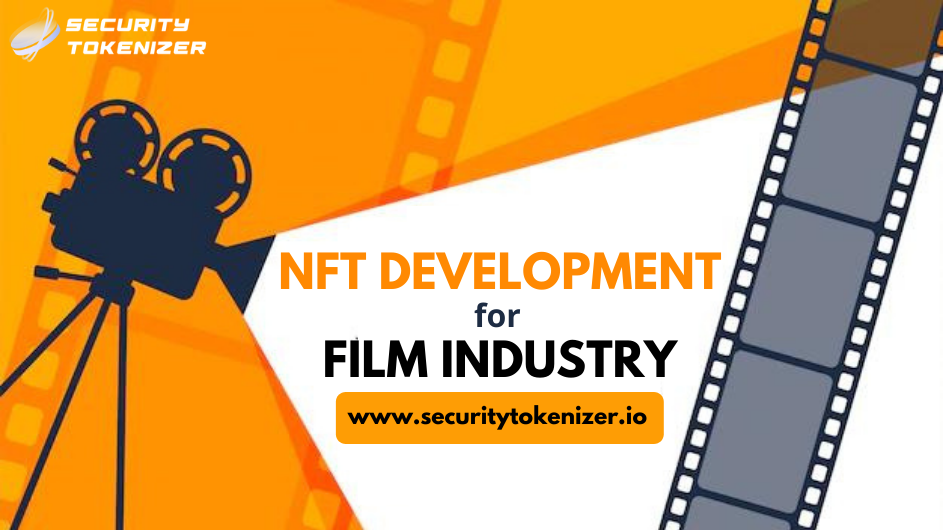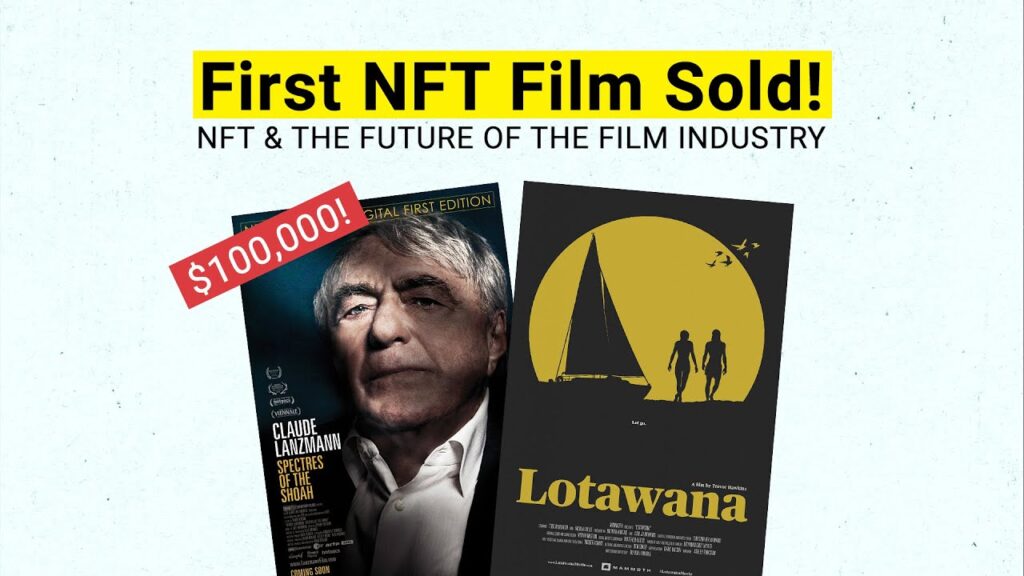What are NFT’s and how are NFT’s shaping the Film Industry?
Blockchain technology. Non-fungible tokens (NFTs). Web 3.0. You might be one of many that have been hearing these terms get thrown around left and right lately. What is it about them? What is all the buzz about?

First, let’s look briefly into what NFTs are. NFT stands for “non-fungible token”. Basically, an NFT is an asset, in the blockchain. Each NFT has a unique identification code and metadata that distinguishes them from each other. They cannot be replicated. NFTs cannot be traded or exchanged at equivalency, which is where they differ from cryptocurrency since they can’t be used as a medium for commercial transactions.
At a high level, NFTs can be thought of as electronic certificates for each unique asset or collection of assets. Non-fungible tokens encode the origin and the other relevant details about the asset they are certifying. An NFT is held by a single wallet and can only be owned by that user until traded to another user at their discretion.
An NFT can represent an individuals’ identity, property, rights, and more. For instance, NFTs can represent real-world items like artwork or real estate. This is a form of tokenizing which allows efficient buying and selling of tangible assets, while at the same time reducing the possibility of fraud.
How are NFTs changing the future?
Blockchain technology in tandem with NFTs will revolutionize many industries in the following years. Particularly for content creators, NFTs can be the pathway to solving a major problem.
NFTs establish a direct way of compensation for creators, by eliminating the middlemen that end up taking a cut of the revenue if the creator wants to monetize their work. By using NFTs, content creators can create their own tokens and sell them on decentralized marketplaces. In this way, the creator has full control over their piece, and as we mentioned there’s a financial benefit to this aspect as well.
 NFTs and the Film Industry
NFTs and the Film Industry
The film industry has been a bit slow when it comes to adapting NFTs, compared to musicians or artists. However, over time the interest has been increasing and now a growing number of film and TV studios are beginning to look into NFTs. For instance, the animated series “Stoner Cats” have raised 8.4 million dollars in the sale of NFTs (granting holders exclusive rights to watch episodes). That just shows one case in point amongst many out there.
Alex Salnikov (co-founder of Rarible) recently said that NFTs bring a strong value proposition to the industry. In any creative sector, NFTs provide an alternative source of revenue and digital-native audience engagement. More reassurance is provided when media giants such as Fox started to explore investment opportunities within the NFT space.
While NFTs might still be in their early phase, the opportunities they provide are vast. Besides being a new source of merchandise, NFTs could also help to shape the movie industry. They can enable smaller, indie film producers to secure financing for their films, as well as integrate with the viewers and allow them to be a sort of influence in the film production.
As we said, the number of possibilities with NFTs is quite big. It can prove to be very beneficial if you start experimenting with NFTs while they’re still in their early phase. Below we have written about 5 ways that NFTs can be an impact on the industry.
1. Revenue streams
Collectibles and special additions always spark interest amongst fans. The creators can leverage this excitement by reintroducing popular past special editions thus invoking a nostalgic feeling. For instance, in the past studios elevated their revenue by releasing exclusive, limited-edition content such as director’s cuts, cast interviews, and behind-the-scenes footage. The particular fans of that movie were more than willing to compensate financially for those limited edition products. In this manner, video NFTs provide an opportunity to repopularize this trend again, especially since NFTs are hard-capped meaning there’s a true limit to them, and they also come with an “authenticity certificate” which just increases the value more.
Another aspect is using NFTs as a crowdfunding source. Crowdfunding has become very popular nowadays as a way to secure financing, for indie films especially. For a creator that is well established, or has a loyal fanbase, crowdfunding can be a powerful way to finance their independent projects and allow creative freedom. For instance, you can sell exclusive rights to only 100 buyers, hence creating a sense of scarcity that will increase the value of your production. On the other hand, if you produce shorter forms of content that get released more frequently, you can tokenize the membership to your content platform using NFTs. No advertisements, no sponsors, simply the content you produced for the audience to watch.
2. Marketing
The NFT marketplace is quite large. Consequently, it can offer creators a new distribution channel where they can present their content. In that particular medium, they’re completely independent of bigger platforms such as YouTube for instance.
This allows the creators to deliver exclusive content, interviews, etc. Essentially they have full control of what they deliver as a final product. The content, video content, in this case, gets delivered to the fans directly without needing to negotiate with studios, networks, without needing to cater to their policies.
3. Tokenized rights management
As we previously mentioned, NFTs and the blockchain network provide quite the freedom. In this case, video content creators, or film producers, are able to remove the middlemen from the process of video sales and streaming. This benefits the creators considerably. In addition, the whole network can be transparent, with a transparent ledger distributed which shows clearly the contribution of each member, the revenue that was generated, thus making the whole financial process fair to everyone and agreeable upon.
Next, there’s the opportunity of creating a digital rights database, aka the new IMDB. However, this type of rating and information system has the potential to be self-building. For instance, owners with smart contracts possess metadata for NFTs, let’s assume all are movie projects. These NFTs are part of the blockchain, and together with other projects create a richly distributed dataset that anyone can reference and interact with through blockchain.
4. Decentralization
The way we have consumed video content, and how we consume video content have shifted fundamentally throughout the years. This new emerging digital infrastructure is allowing video storage and distribution to happen in a decentralized fashion.
Now the opportunity exists to create video-based NFTs than can have the length of an entire movie or TV series. This introduces a new video NFT platform & marketplace that is completely decentralized even from the blockchain. Thus, it provides the members of the network with complete freedom, unified influence, and the opportunity to grow and scale is quite large since the rewards that are granted are in direct correlation with the number of people that use the “decentralized network”.
 Conclusion
Conclusion
Although there are some limitations to overcome, there are multiple opportunities out there for NFTs to change the world of video, and how we consume video content.
The concept is still young, and it is currently limited to people that are familiar with cryptocurrency transactions, as that’s the only way currently that NFTs are traded. However, the number of crypto enthusiasts is growing rapidly, with more and more people getting their feet wet each day.
Movie NFTs are going to disrupt the global movie-making industry by granting the audience the ability to enjoy their favorite content, while also enabling a new breed of actors, writers, and directors to express their creative spirits and bring their ideas to life through the funds provided by the movie aficionado community.
